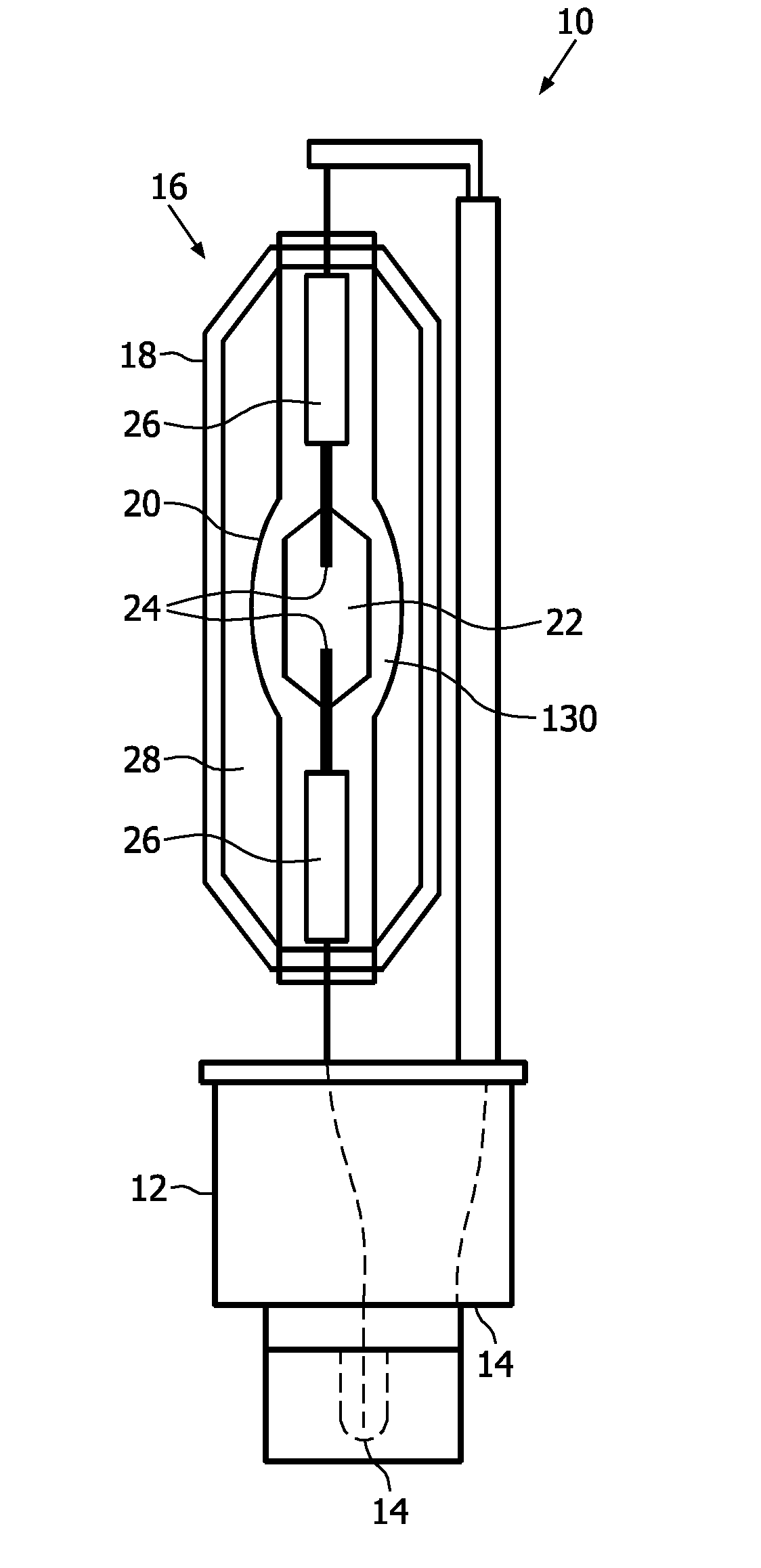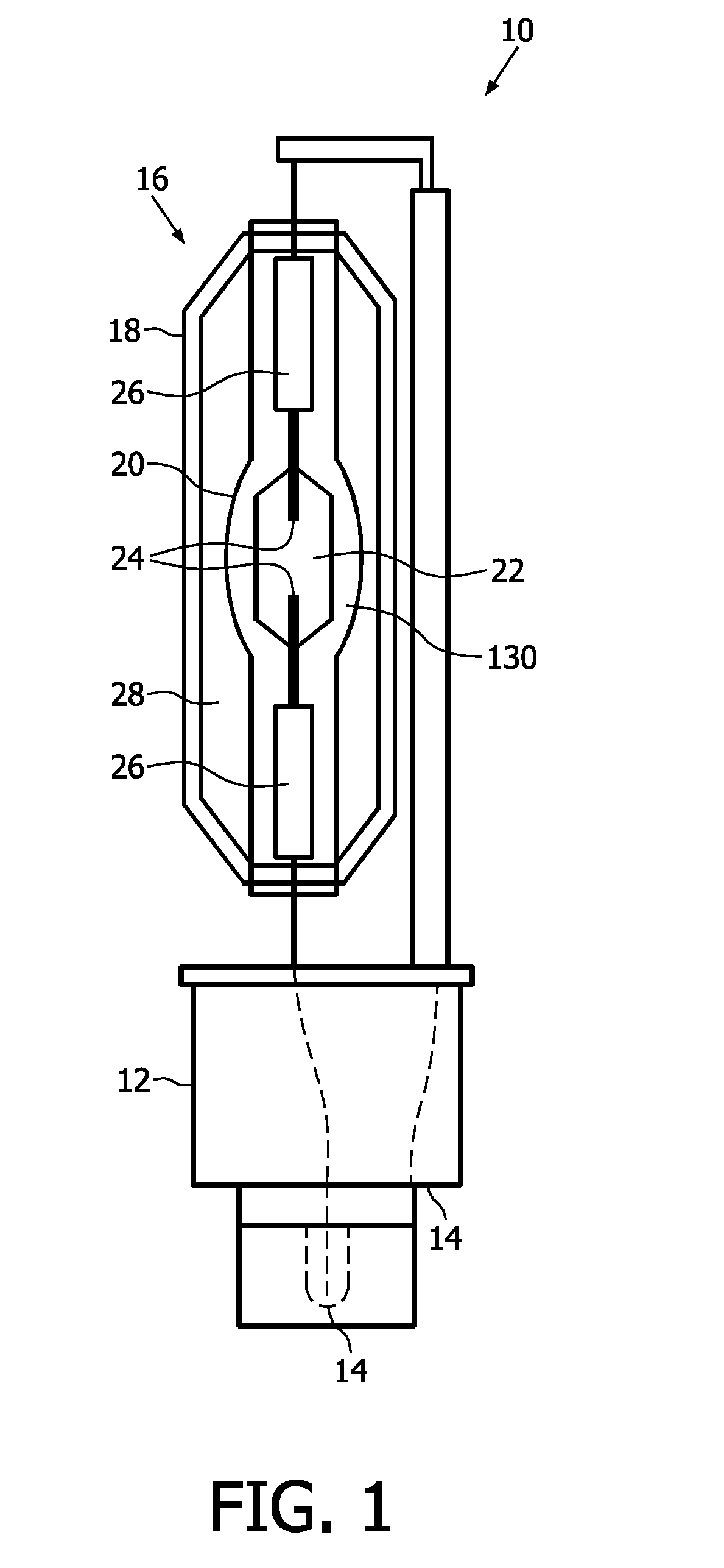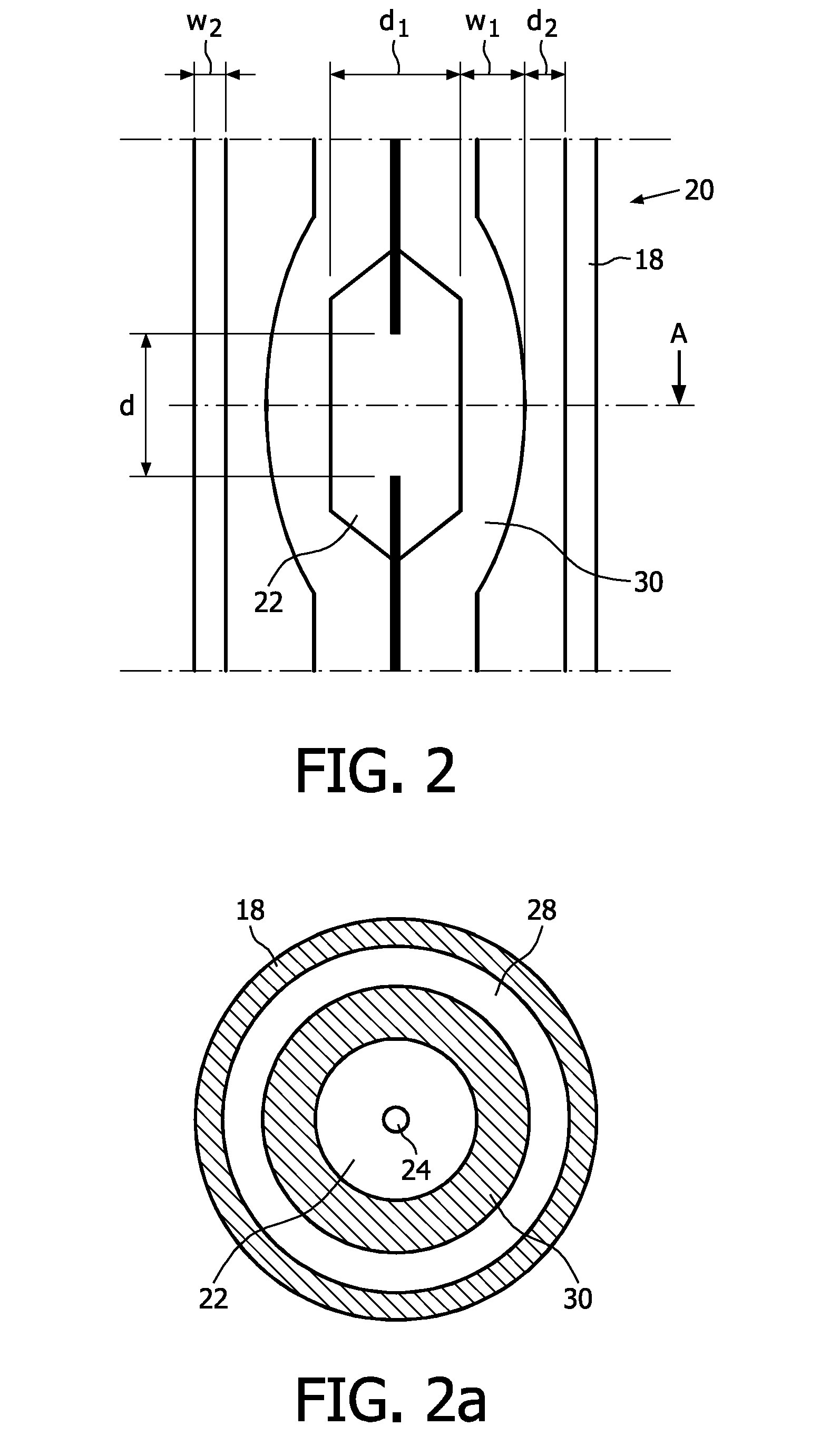High efficiency discharge lamp
a discharge lamp, high efficiency technology, applied in the direction of gas discharge lamp details, electric discharge tubes, electrical equipment, etc., can solve the problem of reducing efficiency in the contrast, and achieve the effect of energy-saving operation
- Summary
- Abstract
- Description
- Claims
- Application Information
AI Technical Summary
Benefits of technology
Problems solved by technology
Method used
Image
Examples
example 2 (
[011425 W)
[0115]The discharge vessel and outer bulb dimensions are the same as in example 1. The following parameters were chosen differently from example 1:
[0116]Electrode diameter: 230 μm
[0117]Outer bulb filling: 50% Xenon, 50% Argon, 100 mbar
[0118]Heat transition coefficient:
λd250W / (m2K),
measured at 800° C.
[0119]Xenon pressure (at 25° C.): 15.5 bar
[0120]Halide composition: 113 μg NaI, 83 μg ScI3, 4 μg ThI4
[0121]Total amount of halides: 200 μg
[0122]Amount of halides per mm3
[0123]of the discharge space: 10.52 μg / μl
[0124]Mass ratio of NaI / ScI3: 1.35
[0125]Due to the higher heat conductivity of the outer bulb, the increased mass ratio of NaI / ScI3, the lower amount of halides and the lower Xenon pressure, the efficiency is only 91 lm / W, thus significantly lower than in example 1.
[0126]The metal halide composition includes a small amount of ThI4 (which increases the efficiency) to lower the work function of the electrodes, which during run-up helps to limit the heat (electrode losses)...
example 3 (
[012725 W)
[0128]To achieve a higher efficiency than in example 2, the total amount of halides in the following third example is raised with regard to example 2, such that the filling of the discharge space 22 is as follows:
[0129]Xenon pressure (at 25° C.): 15 bar
[0130]Halide composition: 170 μg NaI, 125 μg ScI3, 6 μg ThI4
[0131]Total amount of halides: 300 μg
[0132]Amount of halides per mm3
[0133]of the discharge space: 15.8 μg / μl
[0134]Mass ratio of NaI / ScI3: 1.35
[0135]Due to the higher amount of halides, the measured efficiency at 25 W is 93 lm / W, thus higher than in example 2.
example 4 (
[013625 W)
[0137]In a fourth example, all lamp parameters are the same as in the above third example with the exception of the outer bulb filling, which is provided as follows:
[0138]Outer bulb filling: Xenon 100 mbar
[0139]Heat transition coefficient:
λd223.3W / (m2K),
measured at 800° C.
[0140]The measured efficiency of 95 lm / W shows the positive influence of the lowered heat conductivity in the outer bulb.
PUM
 Login to View More
Login to View More Abstract
Description
Claims
Application Information
 Login to View More
Login to View More - R&D
- Intellectual Property
- Life Sciences
- Materials
- Tech Scout
- Unparalleled Data Quality
- Higher Quality Content
- 60% Fewer Hallucinations
Browse by: Latest US Patents, China's latest patents, Technical Efficacy Thesaurus, Application Domain, Technology Topic, Popular Technical Reports.
© 2025 PatSnap. All rights reserved.Legal|Privacy policy|Modern Slavery Act Transparency Statement|Sitemap|About US| Contact US: help@patsnap.com



